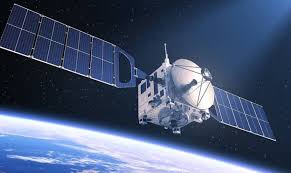By Costa Nkomo
HARARE – Zimbabwe has successfully launched its second earth observation satellite, ZimSat-2, into orbit, marking a significant step forward in the country’s space exploration program.
However, the launch has been accompanied by a rather shaky performance from government officials regarding the disclosure of the costs involved.
The satellite, designed and manufactured through a collaboration between the Zimbabwe National Geospatial and Space Agency (ZINGSA) and Southwest State University in Russia, is expected to play a crucial role in earth observation, agriculture, and environmental monitoring.
“The satellite was designed for earth observations and data collection in agriculture, environmental protection and natural resource management. ZimSat-2 will monitor the earth and support missions that keep track of crop health, predict yields and identify nutrient deficiencies,” said Information Minister Jenfan Muswere during a post-cabinet media briefing.
But when it came to revealing the costs, government officials fumbled. While acknowledging the importance of transparency, higher and Tertiary Education Minister Fredrick Shava failed to provide a clear figure.
“Maybe the Minister of Finance will help me. The initial materials put together is to the value of US$600 000 dollars and there could be other incidentals associated with this amount. But also the actual work put into it by various technical people has not been costed to this amount. But we will give you the figures once the information is clear,” he said.
Finance Minister Mthuli Ncube did not offer a definitive figure but emphasized the project’s value, brushing aside the cost as relatively insignificant compared to the potential benefits of satellite technology.
“It is very a similar figure on what we spent on ZimSat 1 working with Japan. So it has been quite cost effective for what we are achieving and what are able to do with satellite… First of all is the skill acquisition, the development of frontier knowledge in space technology and as well as the usefulness of the satellite in gathering information, earth observation, and tracking climate change issues.
“I think you agree with me that the value of the satellite in terms of the benefits will be far exceeding the meagre cost of US$600 000 and US$600 000 is efficient in the first place,” Ncube said.
This lack of clarity on the cost of the ZimSat-2 launch raises eyebrows, particularly given the Zimbabwean Constitution’s Section 298, which emphasises the principles of public financial management, transparency, and accountability.
Zimbabwe launched its first satellite ZimSat-1 in November 2022.

